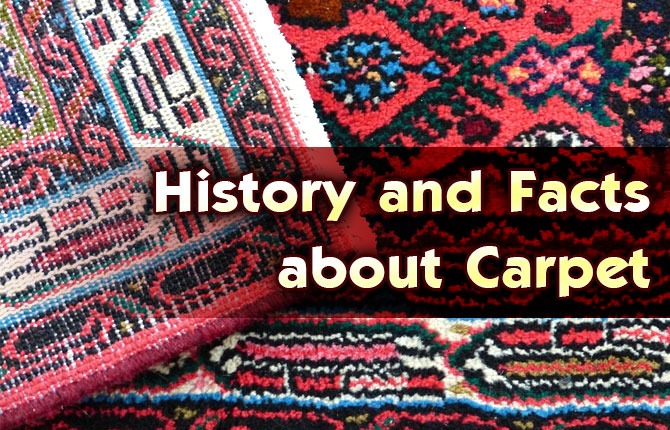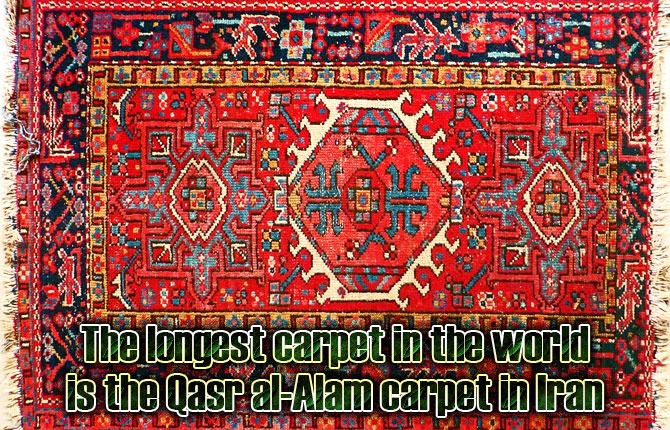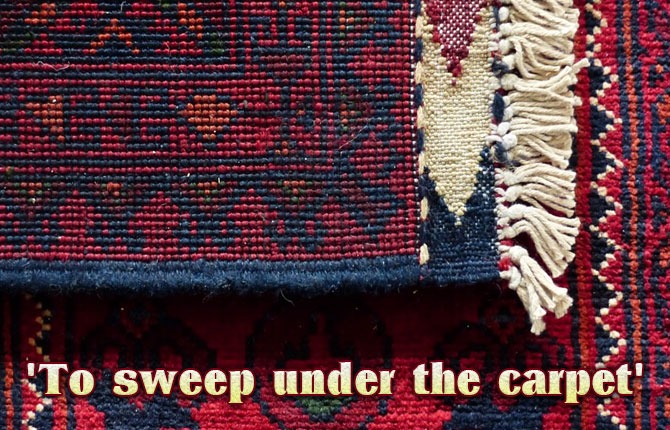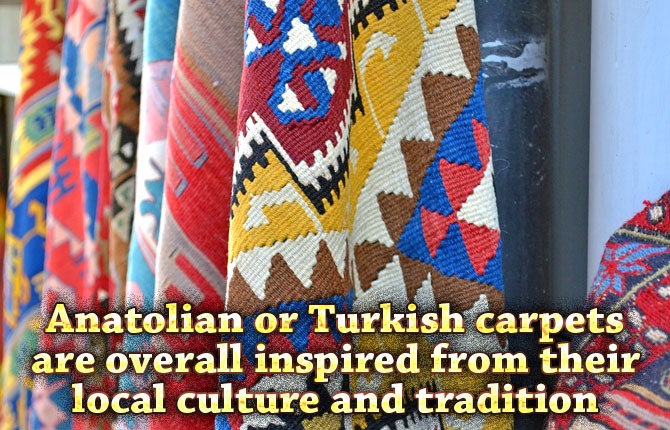The interior of a home is made up of many different objects that help make it unique and interesting. Of all these, a clean carpet of all shapes and sizes could be a major influence in setting the tone of a room or even the whole house. Since this is such an important factor in our home décor, it’s worth taking a closer look into the history of carpets and how they progressed to the modern design we know today.
The carpet possesses a long, rich, and interesting history, but it is not known yet when and where it really originated. Although its origins will remain shrouded in mystery, historians state that the carpet industry dates back to thousands of years before Christ.
During the early days, the carpet was easy to transport and thus was used more for practical purposes rather than decorative. However, it did not take long before the carpet was regarded as a luxury item as it was woven by hand and took a long time to make.
Here are some more interesting facts about the carpet through the ages:
The Longest Carpet in the World
The longest carpet currently known to us is the Qasr al-Alam carpet located in Iran. This carpet covers an incredible 5,625 square feet!
Needless to say, it took many hands to weave this enormous carpet — about 1,200 women! The design was conceived by artist Ali Khaliqi, and the making of the carpet took over 16 months before it was finally completed in 2007.
Simulating the Oriental Rug
The Oriental patterns of many traditional carpets from the East were something of a winder in the West. Oriental carpets are still very much in fashion, with even the flying carpet in the Disney cartoon ‘Aladdin’ having a similar design.
There were attempts to simulate the Oriental-styled rugs in the United States, which eventually became successful. Industrialist/entrepreneur Marshall Field tweaked the Axminster weaving loom into a machine-run carpet maker. It was then able to produce rugs with intricate, colorful, Oriental-inspired designs.
Karastan started as a rug mill in 1926, and it is now one of the biggest manufacturers of carpets and rugs. It is one of the major companies that produce simulations of antique carpet designs as well as the updated version of Oriental rugs, both woven and tufted. There’s a huge market for such designs, which is enough reason for those looms to keep spinning.
The Red Carpet
The saying ‘rolling out the red carpet’ means that one is getting ready to give some visitor a great welcome. It also means respect and honor, as a red carpet is usually utilized for marking the route taken by heads of states, important politicians, etc.
In the world of showbiz, the red carpet is where all the celebrities walk on during important events like award ceremonies. They’re then interviewed, photographed, and generally observed on the same carpet before they take their seats.
While the red carpet as a symbol of importance is well known today, the first known mention of it dates back to 5th century BC. This was in the play ‘Agamemnon’ by Aeschylus. In fact, it was more like a tapestry that King Agamemnon’s wife had laid on the ground for walking upon. In the tragic play, Agamemnon refused to walk on it, saying that only the gods were worthy of such extravagance. However, he finally consented to walk on the red carpet and seals his doom by incurring the wrath of the gods.
The Most Expensive Carpet
Carpets are seen as expensive luxuries when they’re hand-woven and patterned with authentic traditional designs. However, the silk Isfahan rug is usually thought to be the most expensive carpet in the world. It was sold at Christie’s for $4.5 million in 2008. The carpet is dated at around 1600 and hailed from Central Persia.
Carpets with Synthetic Fibers
The earliest carpets were made from natural fibers such as silk and wool, with the latter being the cheaper and hence the more common choice. During the early to mid-20th century, man-made fabrics such as nylon, polyester, rayon, and acrylics were introduced. As a result, wool was soon replaced as the main fabric for carpets and rugs.
Synthetic fibers are easy and cheap to produce, which leads to more affordable carpets. Dalton, a city in Georgia, USA, introduced these synthetic fibers into the carpet industry. Due to this, Dalton is now known as the “Carpet Capital of the World.”
The Mongolian Inspiration
The ancient Mongolian carpet weaving industry was obviously influenced by Persia. It dates back almost to the Mongol period in China. Unlike other countries that cultivated their own carpet styles and motifs, Mongolian carpet art was a result of foreign influences, China in particular. This leads many scholars to conclude that it might have been the foreign minorities living in Mongolia who created these carpets.
As Mongolia’s domestic carpet market is only small compared to that of other countries, ancient Mongolian carpets are now seen as rare commodities. Still, there are quite a few modern Mongolian carpets available today, with some very attractive designs. These might not be original, but they’re tastefully done and have their own Oriental touch.
Another Idiom
We’ve already discussed the phrase ‘roll out the red carpet’, so let’s now look at the idiom ‘sweep under the carpet/rug’. This is almost always used in a negative sense, as it’s not considered a very clean habit to sweep anything under the carpet in a literal manner.
“To sweep under the carpet (rug)” means to hide something embarrassing so that other people will never find out. It could also mean hiding someone’s or one’s own flaws. The first recorded mention of this phrase dates back to 1963.
The Tufted Carpet
Tufted carpets originated way back in Dalton, Georgia, at the turn of the century. In order to make these, one inserted yarn through a primary backing, after which an adhesive was applied in order to make sure the tufts stayed in place. After this, there was usually a second backing glued on for stability. The tufts are what lead to that sinking-in feeling when you step on a thick carpet.
Before the 1950s, about 90% of the carpet produced was woven, and only the remaining 10% were tufted. However, with the new and more modern technologies, equipment, and manmade fabrics, tufted carpets and rugs were made more easily. The resulting dramatic change in numbers meant that over 90% of the total carpet production is tufted.
Anatolian or Turkish Carpets
Turkish and Anatolian carpets are well-known all over their world for the colors, designs, and rich history. Many tourists seek to obtain at least a small carpet from these areas as a souvenir and a symbol of their travels.
These carpet designs took their inspiration from the Islamic culture, where display layouts consisted of repetitive or simplistic patterns, symbols or figures. The Seljuk Turks, who invaded Anatolia in 1100, were the ones to introduce the art of carpet weaving to its citizens.
Carpet Cleaning and Maintenance
When you have a carpet in your home or office, it’s essential to clean and maintain it properly. This is something that most people tend to ignore, which is quite an unfortunate thing. Not cleaning carpets correctly means that the dust and other debris of everyday life could remain stuck inside their fibers for years, which can trigger and worsen allergies.
It’s hence important to clean your carpets and rugs regularly, no matter what kind of fabric they’re made from. Investing in a quality vacuum cleaner can make this task much easier. It’s even more important to vacuum your carpets at least a few times a week if you have pets, as they can spread hair and dander around the house. Once you keep up the job of cleaning and maintaining properly, carpets could even be instrumental in improving the air quality of a room.
The Famed Pazyryk Carpet
The Pazyryk carpet’s age is estimated to be over 2,000 years old. This carpet was found in an ancient tomb in Siberia, in 1940. It’s believed to be the oldest surviving carpet in the world.
We can read up more about this carpet and many others in the book “The Carpet: Origins, Art and History” by Enza Milanesi. This would help us to understand the complicated history and importance of the Oriental carpet tradition. Check it out at this link:
Conclusion
Carpets and rugs might be a common sight in most offices, houses, and apartments, but there are several stories and facts behind these floor coverings. Reading up and understanding more about carpets will expand our minds and also make us better equipped to choose carpets for our own home.





